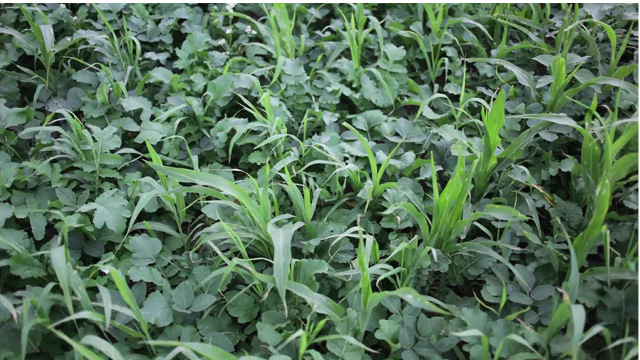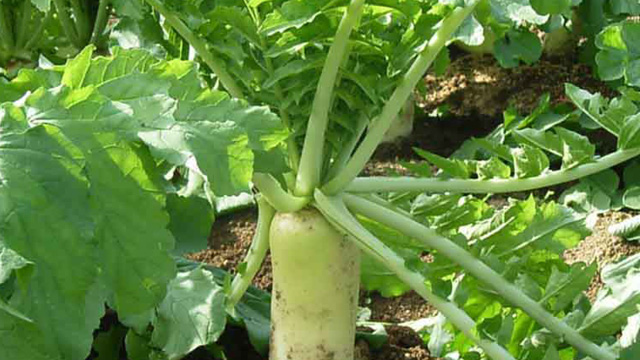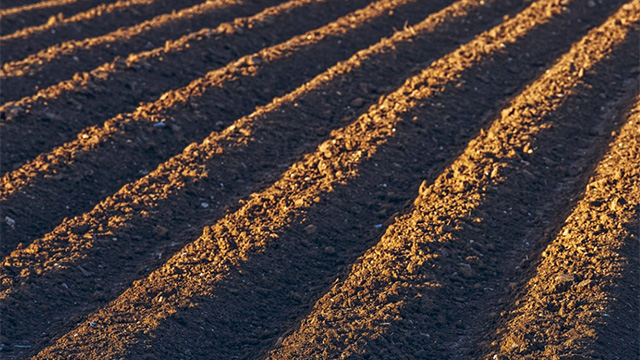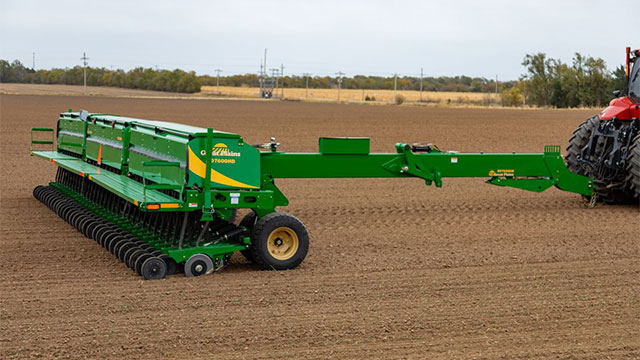We've Got You Covered: Benefits Of Cover Crops And The BD7600 Box Drill
Additionally, eight states more than doubled cover crop acreage during this time frame. Cover crops provide environmental, soil health, and agronomic benefits within commodity crop rotations, which helps explain why there has been a sustained growth of cover crop acreage. Public and private interests in soil conservation and regenerative farming practices combined with the current development of carbon sequestration markets are favorable indicators of the continued rise and interest in cover crops for 2021 and upcoming years.
What Role Do Cover Crops Play In Soil Health?
No matter the cover crop type, extending the amount of time that a living plant has an active root system helps improve the biology and the overall ecosystem within the soil profile. In some operations, cover crops may be comprised of a winter cereal such as rye, wheat, or triticale. In other systems, diverse cover crop mixtures consisting of multiple species of cool or warm-season grasses, legumes, brassicas, and other broadleaf plants may be utilized. Some of the key ways that cover crops can help improve overall soil health and the producer's bottom line include:
Reduce soil compaction: Soil compaction can negatively impact water infiltration, aeration, and the growth of cash crops. Deep tap-rooted cover crops like turnips and radishes have the ability to fracture deep compaction layers. Cereal grain cover crops can grow roots deeper than 20 inches into the soil profile to help water infiltrate soil. Cover crops also provide surface stability and increased flotation to machinery. As a result, this lessens the likelihood of leaving ruts or causing severe compaction from equipment traffic.
Cycle Nitrogen & other nutrients: Nitrogen can be lost from the soil profile in large quantities when there are no growing plants present to capture it. In between crop cycles, a cover crop with a living root system can scavenge nutrients, reducing the likelihood that the nitrogen escapes.
Reduce soil erosion: Cover crops help protect the soil surface from wind and water erosion. Living or dead plant material from cover crops will reduce the impact of the rainfall hitting the soil, improving infiltration, and reducing soil and water runoff, especially in low residue situations. Following soybeans or a fall tillage pass, a winter cover crop can provide great soil protection.
Improve water infiltration rates and water-holding capacity: One of the primary soil health benefits of decomposing cover crops' biomass and root systems is building soil structure. Soils with improved structure and aggregate stability are able to infiltrate water at a faster rate and have a larger storage area to hold on to the water. This can provide a great boost to the following cash crop and maximize yield potential by limiting the effects of drought stress.
Limit weed competition: The canopy from cover crop growth can help to suppress weed seedling growth. The seedlings simply have no space, nutrients, and water to germinate. As cover crops grow, the residue or leaf canopy can also reduce available light, further altering the weed's growing environment.
Added forage for livestock: Another agronomic benefit of cover crops is livestock grazing. This is a great way to further improve the economic value of cover crops while improving the soil. Livestock grazing also adds valuable nutrients back to the soil, contributing to the soil biology through livestock manure.
Improve crop yields: SARE/CTIC Cover Crop Study data from the last three years indicates that corn and soybean yields benefit from the use of cover crops. During drought years, it appears that cover crops may have provided an added yield benefit when compared to uncovered fields.
Methods Of Cover Crop Seeding
To maximize the benefits of cover crops, achieving a consistent and uniform stand is of utmost importance. However, depending on the seeding method used, this can be challenging. When choosing a cover crop seeding method, several factors should be considered. First, producers must determine their goal(s) for the cover crop. For example, producers may be focused on cycling nutrients and growing biomass to provide weed control, while others may want to supplement the winter forage needs of livestock. Other important items to consider are where cover crops fit into the current rotation, as well as the type of cover crop species to grow. In a corn/soybean rotation, producers need to ensure the cover crop will have enough time to get established prior to winter. If time does not allow, producers may want to consider a more diverse cover crop species or interseeding into the cash crop with a specialized 3-point drill or spreader prior to canopy. Seeding methods for cover crops post-harvest, either in the fall or mid-summer, may include drilling, broadcasting and incorporating with a tillage tool, or even seeding on wide rows with a planter.
When selecting a seeding practice, producers should align their preferred method with their farm operation, weather, environment, and cover crop goals. To maximize the economic and agronomic value of cover crops, producers should focus on the basic agronomic principles: consistent seed placement, adequate seed-to-soil contact, uniform emergence, and accuracy of seed rate.
Benefits Of The BD7600
The BD7600 offers producers exceptional seed placement, seed-to-soil contact, uniform emergence, and accuracy. In addition to seeding a wide variety of cash crops including wheat, soybeans, rice, grain sorghum, and many others, the BD7600 offers unmatched versatility and seed rate accuracy when seeding cover crops. Whether producers are seeding a single-species cover of cereal rye or a diverse mix of 10+ plant species, the versatility of the BD7600 metering system and other agronomic features make this drill the optimum cover crop seeding solution. One of the most innovative features on the BD7600 is the seed meter, which offers great accuracy across a wide range of seed types. Great Plains seed cups are equipped with main seed and small seed meter wheels and can be easily configured to plant a variety of row spacings. To select the desired wheel, simply open the corresponding seed gate. For example, to plant using 1511 row spacings on a 7 .511 drill, the producer would close every other row. Producers can also shut off rows to calibrate their drill in the field with ease and without the worry of wasted seed.
To apply two products simultaneously, the BD7600 has a split-box design that utilizes a divider and a second set of seed meters to keep products separate and to independently meter each crop. This design offers the ability to keep small and larger seeds in a diverse cover crop mix separate, which allows for improved seed distribution throughout the field. The secondary split-box seed meter comes standard with a large and small seed meter wheel. The large seed wheel is specifically designed for metering dry fertilizer products or large seeds, such as garbanzo beans. This design also allows for seeding cover crop mixes, such as oats and alfalfa.
For the first time, producers can also plant cover crops on an "every other row" pattern at separate depths and rates simultaneously with the BD7600. To do this, producers should set the front and rear metering systems for the desired crops and rates; open either the large or small seed meter door on the front and rear meters; then, set the opener t-handles to the correct depth for the seed being planted. The result will be two cover crop species or mixes planted at two depths and rates on every other row.
Producers who desire greater control and accuracy in their field operations should take note of the hydraulic drive feature now offered on the BD7600. The hydraulic drive system is straightforward and durable, offering section control and variable rate capabilities of seed and/or fertilizer directly through any ISOBUS-compatible virtual terminal.
When it comes to achieving a uniform crop stand, accurate seed metering is only half of the challenge. The BD7600's row unit design has several key features that lead to even emergence. For conventionally tilled, clean seedbed conditions, Great Plains offers a standard 13.5" double-disc opener with a ¼" leading edge. For more adverse seeding conditions, including min-till or no-till, the heavy-duty opener with 1511 double-disc blades and a ½" leading edge are combined with a heavier opener body and down-pressure spring to slice through residue and create the ideal seed trench.
To ensure seed is placed at the bottom of the seed trench, the BD7600 features a full-length seed tube that safely delivers the seed to the bottom of the trench. This provides optimum seed-to-soil contact and more uniform emergence. If utilizing a split-box drill to apply small seed or fertilizer, the second product is placed in the seed trench slightly behind the double-disc openers and covered with soil by the rear press wheel. If utilizing starter fertilizer, this placement method allows the fertilizer to be placed near the seed where it can provide the maximum benefit to the plant's growing root system. For small seeds, this improves the seed-to-soil contact, leading to a better stand. Whether producers are considering implementing cover crops for the first time, have been utilizing cover crops for numerous years, or are looking for the right drill to plant cash crops, the new BD7600 box drill is an innovative solution that offers producers legendary performance.
Find The Drill For You!
Kubota & Great Plains offer a wide variety of drills to meet the needs of your operation. For complete product details and to learn about our other seeding solutions, visit our Products page.





